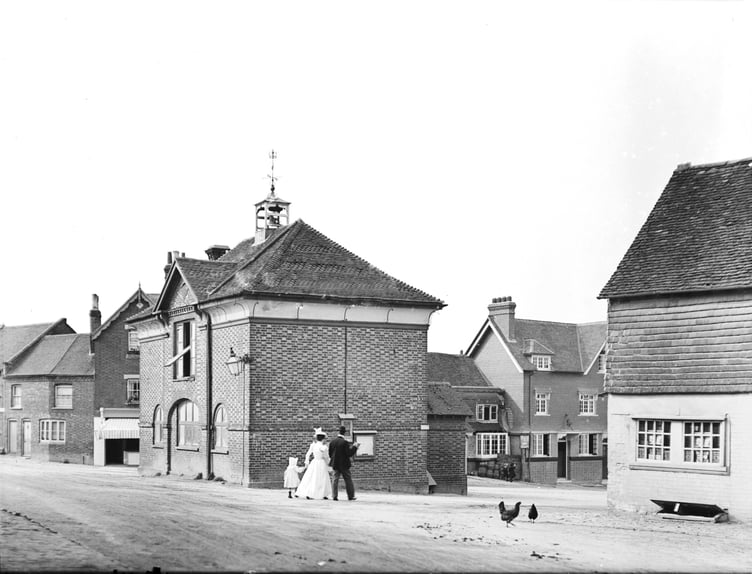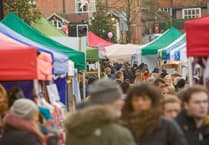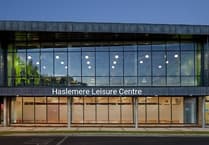Step back in time to discover the story behind one of Haslemere’s most enduring landmarks. The Georgian Town Hall has witnessed centuries of civic life, from bustling markets and schoolrooms to war memorial ceremonies and council meetings, and remains at the heart of the town today.
With this, Haslemere Museum's first formal contribution to Peeps in the Past, we begin delving into the past life of a building that has, in various guises, been central to Haslemere life for centuries. As you drive south down the High Street, the charming sight of the red-brick, Grade II-listed Town Hall greets you at the junction of the T of medieval Haslemere’s layout.
The building is key to all manner of civic activity, not least serving as the backdrop to the moving Remembrance Service at Inigo Triggs’ war memorial, where the names and sacrifices of the town’s war dead are solemnly remembered each year.
A building has stood on or near the site for centuries. Historic maps variously refer to it as Town Hall, Market Hall, or Market Place, and later as a school. Its history is closely tied with Haslemere’s status as a market town, granted by royal charters of Richard II and Elizabeth I.
Tourist guidebooks in the museum’s library suggest that an ancient market house once stood lower down the High Street, opposite the White Horse pub. Built of timber, it was surrounded by shops, stocks, and a pillory.
The brick building which replaced it in either 1804 or 1814 was sited further south, towards Half Moon House, and was reputedly funded by Haslemere’s two parliamentary representatives. Described in contemporary accounts as a two-storey building, it had open arches at ground level, one of which served as a gaol.

The hall hosted lectures, concerts, and meetings of societies, from the Ladies’ Bible Association to subscribers raising funds for the widow and family of Inspector Donaldson, killed by a crowd of navvies in 1855 after he locked up their associate. By 1861, the West Surrey Times reported that the hall was in a state of “most abject wretchedness, desolation, and decay.”
Local subscribers raised funds for repair; the arches were walled in, the upper floor removed, and the building became a single-room facility.
In 1876, the seven-mile radius for the newly formed local Agricultural Association was measured from here. The hall also housed a point from which people could raise an alarm for Haslemere’s Volunteer Fire Brigade.
Guidebook author Joseph Swindells described the building in 1899 as “a plain building with a clock,” then used as an infants’ schoolroom. At that time, it was owned by local banker and philanthropist James Stewart Hodgson, who left it in his will to the Urban District Council.
With the upper flooring replaced, the hall hosted council meetings, inquests, and twice-weekly visits from the Registrar of Births and Deaths in 1914. In 1938, Carnival Queen Miss Ivy Downe handed back “the key of Haslemere” to the Chairman of the Urban Council here.
Today, the Town Hall functions as a civic centre and traffic island.
Former Herald journalist W.A. Sillick recorded a 1937 proposal to demolish the hall for a “proper roundabout,” with the adjacent car park turned into a garden. Despite frequent full occupancy of the car park – 32 cars were counted at one point – the plan was ultimately rejected in 1948 after considering its use for the Food Office, County Library, and St John Ambulance. In 1974, it became home to the new Haslemere Town Council and remains so today.
Haslemere Museum, which houses a library of local history sources including maps, guidebooks, and photographs, is staffed by specialist volunteers and is usually open on Tuesdays from 10am to 3pm. The museum plays a vital role in preserving and interpreting the town’s heritage, offering visitors insights into Haslemere’s past and its civic landmarks like the Town Hall.





Comments
This article has no comments yet. Be the first to leave a comment.